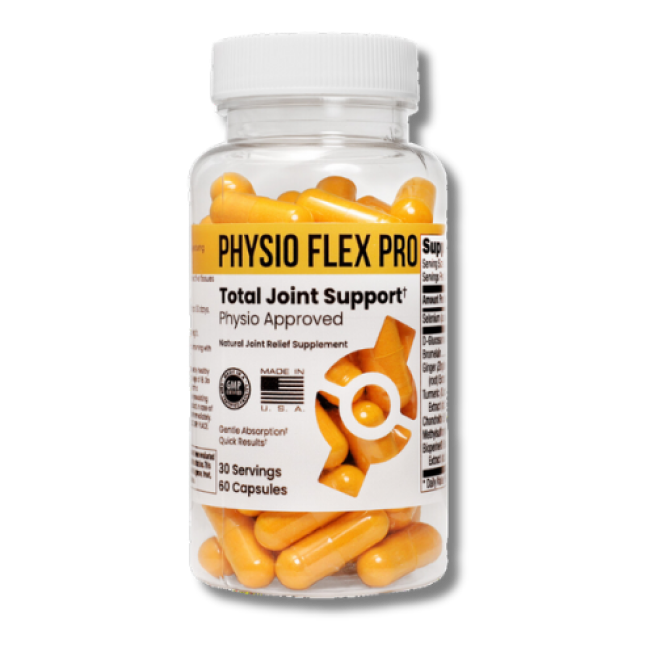You've tried everything. Rest, ice, heat, stretching, ignoring it, pushing through it. Yet your joint pain persists, and you're starting to wonder if this is just your new reality.
Here's the truth: You're probably following advice that's not just wrong - it's making you worse.
The joint health world is packed with myths that sound logical, feel familiar, and are repeated by well-meaning friends, outdated medical advice, and fitness "gurus" who've never dealt with real joint pain.
These myths aren't just harmless misconceptions. They're actively sabotaging your recovery and keeping you trapped in a cycle of pain, frustration, and failed solutions.
Today, we're destroying the 7 most dangerous joint health myths that are standing between you and pain-free movement.
Myth #1: "Rest Is Best - Just Stop Moving Until It Stops Hurting"
The Myth:
When something hurts, the natural instinct is to stop using it. Rest it completely until the pain goes away, then resume normal activity.
Why It Sounds Right:
It makes intuitive sense. If movement causes pain, stopping movement should stop pain, right?
The Brutal Truth:
Complete rest is one of the worst things you can do for most joint pain. Here's what actually happens when you stop moving:
-
Joint fluid production decreases (your joints literally dry out)
-
Muscles weaken rapidly (you lose 1-3% of muscle strength per day of inactivity)
-
Range of motion decreases (use it or lose it is real)
-
Blood flow to the area reduces (slowing healing and nutrient delivery)
-
Scar tissue forms (creating long-term stiffness)
The Science:
A 2019 study in the Journal of Pain Research found that people with knee osteoarthritis who maintained gentle, regular movement had 40% less pain and 60% better function than those who rested completely.
What to Do Instead:
Gentle, pain-free movement is healing. The key is finding your "sweet spot" - enough movement to maintain function without aggravating the injury. Think gentle range of motion, light walking, swimming, or specific therapeutic exercises.
Myth #2: "No Pain, No Gain - Push Through the Discomfort"
The Myth:
Pain is weakness leaving the body. If you're not in pain, you're not working hard enough. Push through discomfort to get stronger.
Why It Sounds Right:
We've been conditioned to believe that all progress requires suffering, and that pain equals effort.
The Brutal Truth:
Pain is your body's alarm system, not a badge of honor. When you push through joint pain, you're not building strength - you're creating damage.
Here's what "pushing through" actually does:
-
Increases inflammation (making pain worse, not better)
-
Damages already compromised tissues (turning minor issues into major problems)
-
Creates compensatory movement patterns (leading to new injuries)
-
Teaches your nervous system that pain is normal (chronic pain sensitization)
The Science:
Research shows that exercising through joint pain increases inflammatory markers and delays healing. A 2020 study found that people who modified activities based on pain levels recovered 65% faster than those who pushed through.
What to Do Instead:
Listen to your body's feedback system. Mild discomfort during movement is different from sharp, shooting, or worsening pain. Learn the difference and respect the signals.
Myth #3: "Supplements Don't Work - It's All Marketing"
The Myth:
Joint supplements are expensive placebos. If they worked, doctors would prescribe them. Save your money and just take ibuprofen.
Why It Sounds Right:
The supplement industry has a reputation problem, and many products are indeed overhyped with little evidence.
The Brutal Truth:
This myth throws the baby out with the bathwater. While many supplements are garbage, dismissing all joint support is like saying all cars are bad because some break down.
The research on quality joint supplements is actually impressive:
-
Glucosamine and Chondroitin: Multiple studies show reduced pain and improved function
-
Turmeric/Curcumin: Over 300 studies documenting anti-inflammatory effects
-
Omega-3 fatty acids: Proven to reduce joint inflammation and stiffness
-
MSM: Clinical trials show significant pain reduction and improved mobility
The Science:
A 2018 meta-analysis of 54 studies found that high-quality joint supplements reduced pain by an average of 32% and improved function by 28% compared to placebo.
What to Do Instead:
Choose evidence-based, comprehensive formulations from reputable companies. Look for products with clinical research, proper dosing, and third-party testing. Quality matters more than price.
Myth #4: "Joint Pain Is Just Part of Getting Older - Accept It"
The Myth:
Everyone gets joint pain as they age. It's normal, inevitable, and something you just have to live with. Your parents had it, you have it, your kids will have it.
Why It Sounds Right:
We see older adults with joint problems and assume it's the natural progression of aging.
The Brutal Truth:
Age is not a disease. While some changes occur with aging, debilitating joint pain is not inevitable.
Here's what's actually happening:
-
Decades of poor movement patterns catch up with you
-
Accumulated lifestyle damage becomes apparent
-
Lack of preventive care shows its effects
-
Sedentary behavior accelerates joint deterioration
The Science:
Studies of active populations show that people who maintain good movement habits, proper nutrition, and joint care throughout life have dramatically lower rates of joint problems, even in their 80s and 90s.
What to Do Instead:
Separate normal aging from preventable deterioration. Yes, some changes occur with age, but pain, stiffness, and loss of function are largely preventable with the right approach.
Myth #5: "Heat Is Always Good, Ice Is Always Bad (Or Vice Versa)"
The Myth:
There are two camps: "Always ice injuries" and "Heat is healing." Both sides are absolutely convinced they're right.
Why It Sounds Right:
Both heat and ice have physiological effects, so it seems like one should always be better than the other.
The Brutal Truth:
The ice vs. heat debate misses the point entirely. The right choice depends on timing, type of injury, and individual response.
Ice is best for:
- Acute injuries (first 24-48 hours)
- Active inflammation and swelling
- After activities that aggravate joints
Heat is best for:
- Chronic stiffness and tension
- Before gentle movement or exercise
- Muscle spasms and tight tissues
The Science:
A 2021 review found that alternating heat and cold (contrast therapy) was more effective than either alone for many chronic joint conditions.
What to Do Instead:
Use both strategically. Ice for acute flare-ups and post-activity, heat for chronic stiffness and pre-activity preparation. Listen to your body's response.
Myth #6: "If It's Not Broken, Don't Fix It"
The Myth:
As long as you can still function, joint pain isn't worth addressing. Wait until it's really bad before taking action.
Why It Sounds Right:
We're conditioned to only seek help when problems become severe. Minor pain seems manageable.
The Brutal Truth:
This is like waiting for your car engine to seize before changing the oil. Joint problems are progressive - they get worse over time, not better.
What starts as minor morning stiffness becomes:
- Difficulty with stairs
- Problems sleeping
- Avoiding activities you love
- Compensatory injuries in other areas
- Eventually, surgical intervention
The Science:
Research consistently shows that early intervention is dramatically more effective and less expensive than waiting. A 2020 study found that people who addressed joint issues early had 80% better outcomes than those who waited.
What to Do Instead:
Treat minor joint issues seriously. Address problems when they're small, manageable, and responsive to conservative treatment.
Myth #7: "Surgery Is the Only Real Solution"
The Myth:
Conservative treatments are just delaying the inevitable. If you have real joint problems, you'll eventually need surgery anyway, so why waste time with other approaches?
Why It Sounds Right:
Surgery seems definitive and "fixes" the problem mechanically.
The Brutal Truth:
Surgery should be the last resort, not the first option. While sometimes necessary, many people undergo joint surgery that could have been avoided with proper conservative care.
The reality of joint surgery:
-
Success rates vary widely (knee replacement: 80-90% satisfaction, but 10-20% still have pain)
-
Recovery is lengthy and difficult (months of rehabilitation)
-
Complications are possible (infection, blood clots, implant failure)
-
Results aren't always permanent (artificial joints wear out)
The Science:
Multiple studies show that comprehensive conservative treatment (exercise, weight management, joint support, lifestyle modification) can be as effective as surgery for many conditions, with far fewer risks.
What to Do Instead:
Exhaust conservative options first. Work with healthcare providers who prioritize non-surgical approaches and only consider surgery when truly necessary.
The Real Solution: A Comprehensive Approach
Why These Myths Persist:
-
They're simple (complex problems rarely have simple solutions)
-
They shift responsibility (easier to blame age than change habits)
-
They're repeated by authority figures (outdated medical training)
-
They match our biases (we want quick fixes and easy answers)
The Truth About Joint Health:
Real joint health requires a comprehensive approach:
-
Appropriate movement (not too much, not too little)
-
Proper nutrition (anti-inflammatory foods and targeted supplementation)
-
Stress management (chronic stress increases inflammation)
-
Quality sleep (when your body repairs itself)
-
Professional guidance (when you need expert help)
Your Myth-Busting Action Plan
Step 1: Audit Your Current Beliefs
Which of these myths have you been following? Be honest - we've all fallen for some of these.
Step 2: Start With Movement
Begin gentle, pain-free movement today. Even 5-10 minutes of walking or gentle stretching is better than complete rest.
Step 3: Address Inflammation
Consider both dietary changes and quality joint support supplementation to address underlying inflammation.
Step 4: Get Professional Help
Don't wait until problems are severe. Early intervention with qualified professionals saves time, money, and suffering.
Step 5: Think Long-Term
Joint health is a marathon, not a sprint. Consistent, moderate efforts over time beat extreme measures that can't be sustained.
The Bottom Line
The biggest tragedy isn't that these myths exist - it's that they're keeping people in unnecessary pain.
You don't have to accept joint pain as inevitable. You don't have to choose between complete rest and pushing through agony. You don't have to wait for problems to become severe before taking action.
The path to better joint health starts with better information. Now that you know the truth behind these dangerous myths, you can make informed decisions about your joint health instead of following outdated, harmful advice.
Your joints have been trying to tell you something. It's time to listen - and respond with science, not myths.






